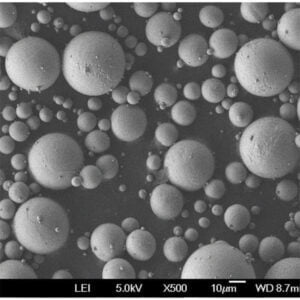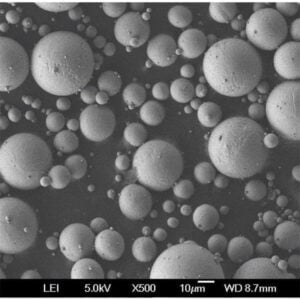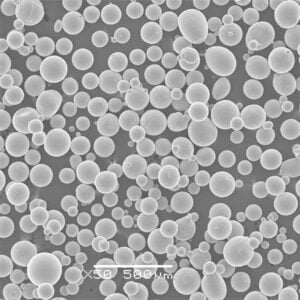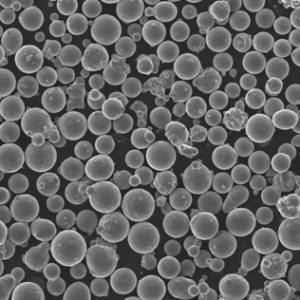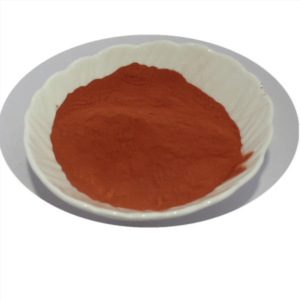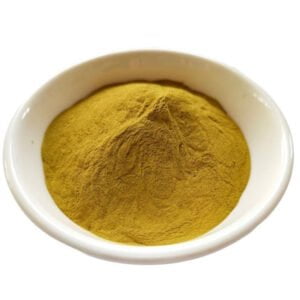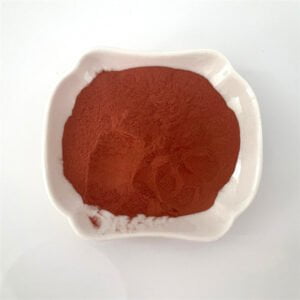HDHチタンパウダー
目次
アームストロングプロセスで製造されたチタンパウダーは、HDH(水素化物脱水素)チタンパウダーとしても知られ、様々な産業で使用されている高純度チタンパウダーです。この記事では、以下の包括的な技術的概要を提供します。 HDHチタンパウダーその特性、製造工程、用途、仕様、選択ガイドライン、サプライヤーなどを含みます。
HDHチタンパウダーの紹介
HDHチタンパウダーは、酸素と鉄の含有量が低く、ほぼチタン金属のみで構成されています。高い真球度と流動性を有する。HDHチタンパウダーの主な特性は以下の通りです:
表1. HDHチタンパウダーの概要
| プロパティ | 詳細 |
|---|---|
| 構成 | ≥99.5%チタン |
| 不純物 | 低酸素、鉄、窒素、炭素、水素 |
| 粒子形状 | 球形度が高い |
| 粒度分布 | 通常10~45μm |
| 見かけ密度 | 2.2-2.7 g/cm3 |
| タップ密度 | 3.0-3.7 g/cm3 |
| 流量 | 25~35秒/50g |
| カラー | ダークグレー |
高純度で球状の形態を持つHDHパウダーは、積層造形、金属射出成形、プレス・焼結、溶射、溶接など、高密度と高品質を必要とする加工に適している。
他のチタンパウダーにはない主な利点:
- より高い純度、より低い格子間元素
- 球状による流動性の向上
- 優れた充填密度と焼結性
- 優れた機械的特性
- 高温での優れた化学的安定性
しかし、HDHパウダーは、純度レベルを達成するために大規模な処理が必要なため、他の品種よりも高価になることがある。
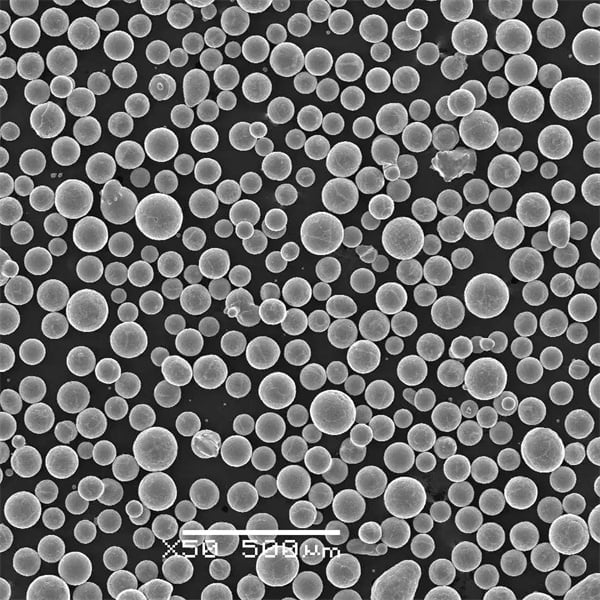
製造工程
HDHチタンパウダー は、複数の工程を経るアームストロング・プロセスで生産される:
1.溶融:商業的に純粋なチタンインゴットは、液体状に溶融される。一般的な原料はチタンスポンジ、スクラップ、合金インゴットです。
2.ハイドライド:溶融チタンは水素ガスと反応して水素化チタン(TiH2)を生成する。冷却し、粉砕すると脆い水素化チタンの塊ができる。
3.脱水:TiH2は真空中で600℃以上の温度で処理され、分解してチタン粉末に戻り、水素が放出される。この粉末は酸素を多く含む。
4.真空精製:複数の真空蒸留サイクルにより、酸素、窒素、水素レベルを≤0.2%まで低減し、高純度HDHチタンパウダーを実現します。
HDHプロセスでは、粒度分布、形態、純度レベル、微細構造などの粉末特性を精密に制御することができる。パウダーは、アプリケーションの要件に合わせて調整することができます。
表2. HDHチタンパウダー製造の概要
| ステージ | 詳細 |
|---|---|
| 溶解 | 液体チタンに溶かされたインゴット |
| ハイドライド | 液体チタンは水素と反応して水素化チタン(TiH2)を形成する。 |
| 脱水 | TiH2は600℃以上の真空下でチタン粉末に分解された。 |
| 真空精製 | 不純物を減らすための複数回の減圧蒸留サイクル |
組成と特性
HDHチタンパウダーは、不純物の少ない99.5%以上のチタンを含んでいます:
表3. HDHチタン粉末の代表的組成
| エレメント | 重量 % |
|---|---|
| チタン(Ti) | ≥ 99.5 |
| 酸素 (O) | ≤ 0.13 |
| カーボン(C) | ≤ 0.08 |
| 窒素(N) | ≤ 0.05 |
| 水素(H) | ≤ 0.015 |
| 鉄(Fe) | ≤ 0.20 |
純度、球状形態、小さな粒度分布は、HDHパウダーを様々な先端用途に適した優れた特性としている:
表4. HDHチタン粉末の特性概要
| プロパティ | 詳細 |
|---|---|
| 粒子形状 | 高い球状形態 |
| 粒度分布 | 通常10~45μm |
| 見かけ密度 | 2.2-2.7 g/cm3 |
| タップ密度 | 3.0-3.7 g/cm3 |
| 流量 | 25~35秒/50g |
| 純度 | ≥99.5%以上のチタン含有量 |
| 酸素含有量 | ≤0.13% |
流動性の向上、高いタップ密度、純度などの特性により、積層造形、粉末冶金部品製造、溶射などの用途に使用できる。
分類と仕様
HDHチタンパウダー は、微粒、中粒、粗粒に分類されるさまざまな粒度分布で入手できる。細目グレードは焼結性に優れ、粗目グレードは流動性を向上させる。
表5. HDHチタン粉末の粒度による分類
| グレード | 粒子径(μm) | 典型的な用途 |
|---|---|---|
| ファイン | 10-25 μm | 積層造形、プレス、焼結 |
| ミディアム | 25-45 μm | プレス・焼結、溶射 |
| 粗目 | 45-106 μm | 溶射、溶接 |
確立された基準による共通仕様:
- ASTM B299:チタン粉末冶金形鋼の仕様
- ASTM B817:粉末冶金チタン合金インペラ部品仕様書
- ISO 23301: インプラント用焼結チタン材料及び製品
HDHチタンパウダーは、粒度分布、形態、不純物レベル、その他の属性に関して、アプリケーションの要件に応じてカスタマイズすることも可能です。
用途と用途
高純度HDHチタンパウダーのユニークな特性は、産業界における以下のような高度な用途に適しています:
表6.HDHチタン粉末の用途と使用法の概要
| 産業 | アプリケーション |
|---|---|
| 積層造形 | 複雑な形状の最終用途チタン部品の3Dプリント |
| 粉末冶金 | インペラーのようなネットシェイプ部品を作るためのプレスと焼結 |
| 溶射 | 耐摩耗性・耐食性コーティング |
| 金属射出成形 | ファスナー、ギアなどの小型で複雑な部品 |
| 溶接 | チタン溶融溶接に優れた溶接性 |
| 航空宇宙 | エンジン部品、機体、タービン |
| メディカル | インプラント、手術器具 |
| 自動車 | バルブ、コンロッド、スプリング |
HDH粉末の高純度、球状形態、良好な流動性は、高い品質が要求される小型で複雑な部品に最適です。強度や耐食性などの優れた機械的特性は、あらゆる産業で応用の可能性を広げます。
HDHチタン部品は、強度、軽量性、耐食性、疲労性能、生体適合性の完璧なバランスを提供し、航空宇宙、自動車、石油・ガス、化学、医療分野の重要部品において、ステンレス鋼やコバルト合金を凌ぐ最高の選択肢となっています。
他のチタン粉末との比較
HDHチタンは、他の市販のチタンパウダーと比較して、パウダーの流動性、密度、純度が著しく優れています。
表7. HDHチタンパウダーと他のタイプとの比較
| パラメータ | HDHチタンパウダー | プラズマアトマイズ | ガスアトマイズド(GA) |
|---|---|---|---|
| 粒子形状 | 球形度が高い | 粗い、不規則 | 丸みを帯びた |
| 流動性 | 素晴らしい | 低い | 中程度 |
| 純度 | ≥99.5%チタン | ≤98%チタン | ≤98%チタン含有量 |
| 酸素含有量 | ≤0.13% | 0.18-0.35% | 0.15-0.30% |
| コスト | 高い | 低い | 中程度 |
プラズマアトマイズやガスアトマイズされたチタンパウダーはコスト面でメリットがありますが、HDHパウダーは、品質基準がより厳しい医療用インプラントや航空宇宙部品などのような重要な用途の要件を満たす上で圧倒的に優れています。
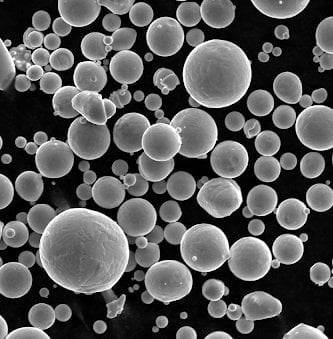
選考ガイドライン
HDHグレードのチタン粉末を選択する際の主な考慮事項:
表8. HDHチタンパウダー 選考ガイドライン
| パラメータ | ガイドライン |
|---|---|
| 粒子径 | 製造工程と部品寸法の要件に合わせる |
| 粒子形状 | 流動性のために球形が好ましい |
| 純度レベル | ≥ 用途に応じた99.5%以上のチタン含有量 |
| 酸素/窒素 | 機械的特性のための超低≦0.13%酸素 |
| サプライヤー | 国際的な品質基準を満たす信頼できるサプライヤー |
パウダーメーカーと協力し、最終用途の要件に基づき、粒度分布、形態、密度、不純物レベルなどのHDHパウダーの特性をカスタマイズする。
10~25μmの細かいグレードは、小さくて複雑な部品に適しています。溶射皮膜には45~106μmの粗いグレードが適している。
よくあるご質問
1.HDHチタンパウダーとは?
HDHチタンパウダーは、水素化脱水素(HDH)プロセスで製造されたファイングレードのチタンパウダーです。3Dプリンティングとして知られる積層造形用の一般的な原料です。
2.HDHチタンパウダーはどのように製造されますか?
HDHプロセスは、スポンジチタンの水素化、続いて脱水素化を含む。このプロセスにより、所望の特性を持つチタン粉末が形成される。
3.HDHチタンパウダーの用途は?
HDHチタンパウダーは、航空宇宙、医療インプラント、自動車部品、スポーツ用品など様々な用途に使用されています。特に軽量で高強度であることが評価されています。
4.積層造形でHDHチタン粉末を使用する利点は何ですか?
HDHチタン粉末は、その優れた流動性と充填特性により、付加製造において好まれ、複雑で複雑な3Dプリント部品の作成に適しています。
5.HDHチタンパウダーの粒度範囲は?
HDHチタンパウダーは、通常数マイクロメートルから数十マイクロメートルの範囲で、アプリケーションの特定の要件に応じて、様々な粒度分布で利用可能です。
シェアする
MET3DP Technology Co., LTDは、中国青島に本社を置く積層造形ソリューションのリーディングプロバイダーです。弊社は3Dプリンティング装置と工業用途の高性能金属粉末を専門としています。
関連記事
Met3DPについて
最新情報
製品

3Dプリンティングと積層造形用金属粉末






